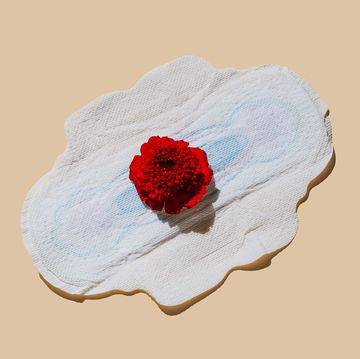If it has ever felt itchy and smelled fishy down there, it’s time you get to know the basics about bacterial vaginosis (BV)—a common vaginal issue we sometimes mistake for a yeast infection. But BV isn’t yeast—it’s got different symptoms and treatments, too. So here’s what you need to know next time you sense something stinky.
1. A Fishy Odor Marks the Spot
The telltale signs of BV are vaginal itching or irritation and a grayish watery discharge with a very distinct, foul, and fishy odor, says Fahimeh Sasan, doctor of osteopathic medicine, an ob-gyn at The Mount Sinai Hospital in New York. The problem: When these symptoms pop up, most of us beeline it to CVS for Monistat—and grow frustrated when they don’t go away because, as Sasan puts it, you never had a yeast infection to begin with. You’ve prolonged your own agony. “I think, unfortunately, all women think any time their vagina itches it’s a yeast infection,” says Sasan. “But in reality, the only commonality between BV and a yeast infection would be itching—yeast infections don’t smell, and BV does have a distinct smell.” Another big difference: The white cottage cheesy discharge of a yeast infection isn’t present with BV. So if you itch, call your doc—you’ll fast-track your treatment and save yourself some uncomfortable days. Watch the video below for more about BV:
2. It’s Not an STD
BV is an overgrowth of the natural bacteria of the vagina—it’s not at all sexually transmitted, says Sasan. In fact, BV is distinctly a vaginal infection, so men can’t get it, she adds. That said, sex can be a risk factor. “When you have intercourse, semen or even the lubrication of a condom can change your vaginal PH,” says Sasan, who adds that, “it’s not that you caught it from your partner.” Other risk factors: Stress, being sick, a course of antibiotics, or another infection in your body can all change the natural flora of your hoo-ha, says Sasan.
3. Lesbians Are at an Increased Risk
Turns out, bacterial vaginosis is more common in women who have sex with women, says Sasan. Why? Docs aren’t quite sure, but lesbians may have more oral sex—and the microbial flora of the mouth could lead to an unstable environment for the vagina, she says.
4. BV is the Most Common Cause of Vaginal Discharge
“Forty to 50 percent of women will have BV at some point within their childbearing years,” says Sasan. And even though many tend to think yeast infections are the most common cause of down-there discharge, the literature suggests BV takes the cake, says Sasan.
5. You’ll Need an Antibiotic
There are two ways to treat BV—neither of which is OTC (back away from the drugstore aisle). The options: an oral antibiotic called Flagyl, which you take twice a day for seven days or a vaginal treatment called metronidazole, which you insert into the vagina at bedtime for five nights. Which one’s best? That really depends on your preference, says Sasan. Most ladies prefer the by-mouth dose, but if you have a sensitive stomach, you might want to opt for the down-there application as Flagyl can sometimes upset the stomach, she says.

Cassie Shortsleeve is a skilled freelance journalist with more than a decade of experience reporting for some of the nation's largest print and digital publications, including Women's Health, Parents, What to Expect, The Washington Post, and others. She is also the founder of the digital motherhood support platform Dear Sunday Motherhood and a co-founder of the newsletter Two Truths Motherhood and the maternal rights non-profit Chamber of Mothers. She is a mom to three daughters and lives in the Boston suburbs.













